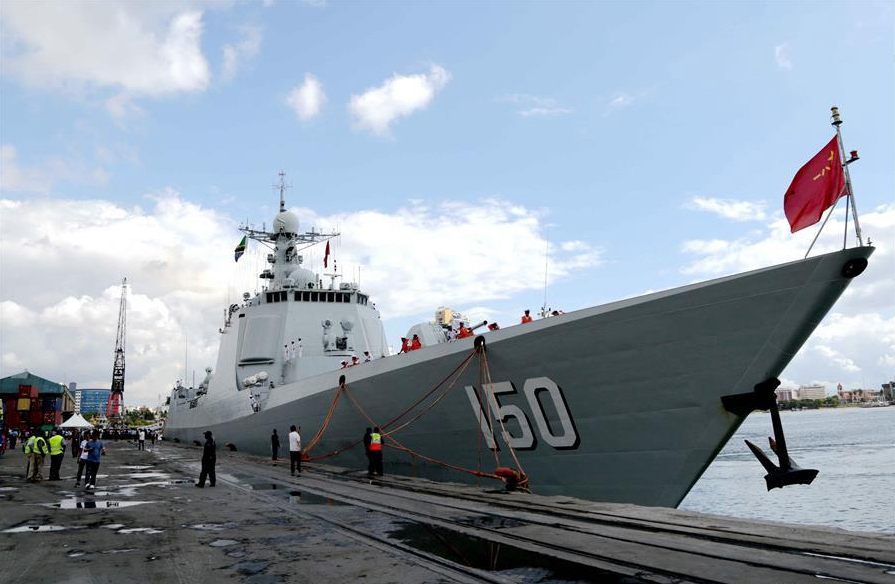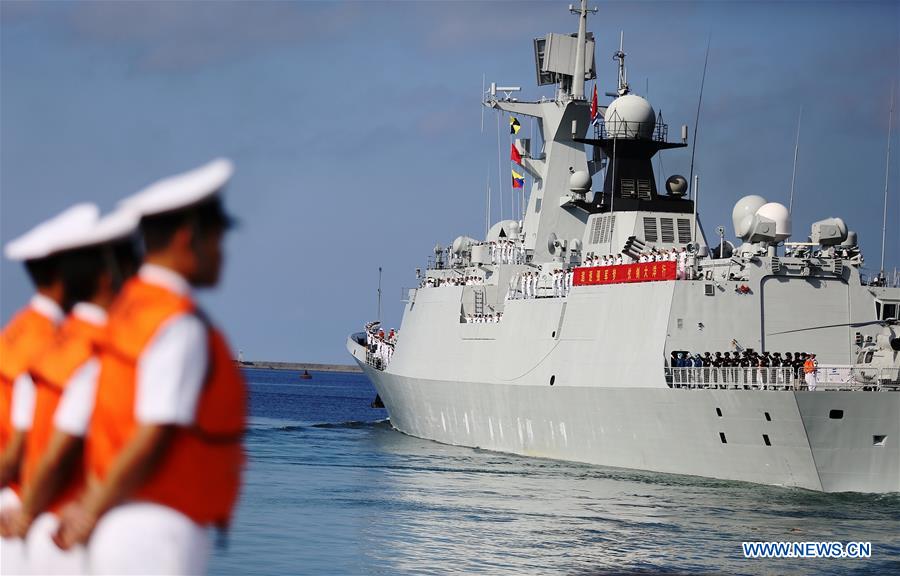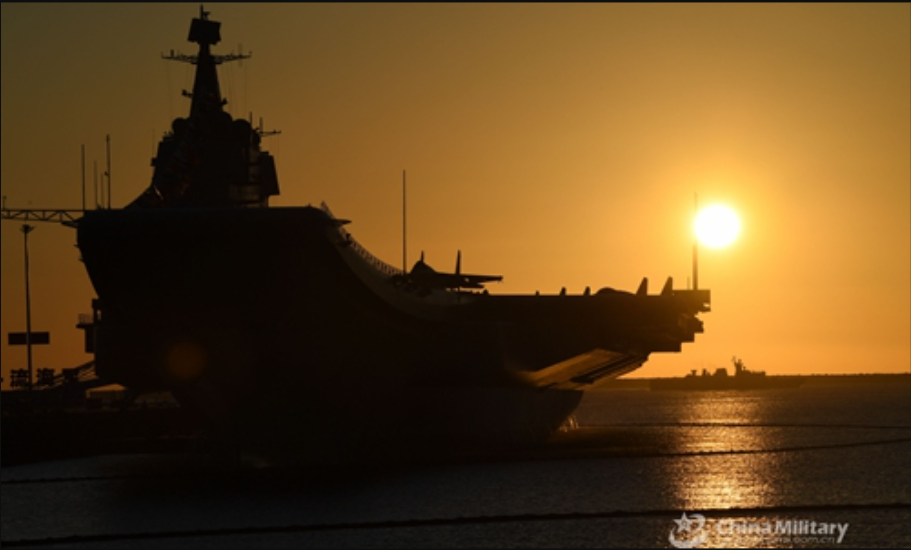
A major weakness “the largest navy in the world” has yet to solve is where Beijing will find skilled shipyard workers and modern facilities to maintain its fleet’s combat readiness far from its shores, the co-author of a major study examining Chinese vulnerabilities said Thursday.
Speaking in a Center for Strategic and Budgetary Analysis online forum, Toshi Yoshihara said, “Chinese analysts can only dream about this access” to the host nation’s workforce and facilities at places such as Yokosuka in Japan and Diego Garcia in the Indian Ocean that the United States enjoys.
China “has a long way to go” in finding nations in “far seas” that are willing to become more actively involved with the People’s Liberation Army Navy and expose themselves to risk if war breaks out. In addition, Beijing would have to work very hard and at substantial cost to overcome “this tremendous lead” the United States has established in basing, maintenance and alliances since the end of World War II.
Yoshihara said, “we can’t contest China everywhere,” which is why Washington and its allies and partners need to have options “to complicate Chinese plans.” An example of that would be “to demonstrate the ability to defend … in the Indian Ocean.” The targeting of potential Chinese weakness could come in demonstrating “fleet air defense of Diego Garcia,” an action “very pointed and very specific.” The report adds that showing leap-ahead technologies in action is another way to alter Chinese thinking.
The report recognizes China as a major local and global power, according to John Lee, who moderated the discussion on the report. “Chinese strengths and weakness are fluid over time” and so they will change as conditions evolve and American allies and partners act, he said. Speaking from Australia where he is with the United States Studies Center at the University of Sydney, Lee said President Xi Jin-ping “is pursuing a high-risk, high pay-off strategy” that is spreading Chinese “resources to cover the far seas, near sears and continental periphery.”
In part, the move to being a global military power reflects its “far-flung economic interests,” Yoshihara said. The Chinese learned a lesson during the Libyan crisis almost 10 years ago – it needed “to protect its own nationals” caught up in the civil war. Chinese leaders see the nation “has the resources and will to protect those [people] and equities” to meet an urgent need, he said.
But “we can see Chinese basing as a liability” to them if there is only one facility in the Indian Ocean, for example, according to Jack Bianchi, co-author of “Seizing on Weakness: Allied Strategy for Competing with China’s Globalizing Military.”
Again, the host nation can see itself as vulnerable in a crisis not of its own making.
To reduce that potential weakness, “new commitment begets new commitment” to avoid being cut off in war, but escalates costs, Bianchi said.

Now, the Chinese have a base in Djibouti and are exploring possible facilities on the east coast of Africa and the South Pacific. The panelists noted that China’s initial approaches to other nations has been commercial, such as proposals to build needed infrastructure like dams, highways, airfields and ports.
China’s practices of balloon-payment loans that cause defaults and its shoddy quality goods produced to protect health care workers during the pandemic have raised concerns about the value of undertaking these projects with Beijing and buying its equipment.
More recently, China has also come forward with a “digital Silk Road” effort to modernize telecommunication networks globally, a presence that other nations have yet to match. The United States has warned that that doing business with Chinese companies like Huawei leave nations vulnerable to espionage.
Bianchi said the Chinese must cover the start-up costs of these facilities, maintaining the bases and the logistical chain to support them – costs that will likely be higher for China than they are for the United States.
According to the report, these relations do not “materialize overnight: they are forged by such intangibles as trust, shared values, institutionalized interactions, and a history of close cooperation. Most of China’s ties with potential host nations lack these essential qualities.”
Yoshihara said the question for the Chinese on far seas basing comes down to quality, durability and the reliability of the host nation, in addition to both the facilities and labor in that country.
“Going global is very hard,” Bianchi said.
Bianchi also said the Chinese Communist Party in the future will have to manage the demands for overseas basing domestically, in addition to commitments to defense spending.
He cited Chinese leaders’ historic “paranoia of encirclement” on land and sea.

As the report states, “China faces an inescapable two-front dilemma in the continental and maritime directions, imposing built-in limits on its global ambitions.” It adds that Chinese strategists recognize its new seaward turn “has been predicated on peace on its continental front. Over the past three decades, amity with Russia freed China to go to sea.”
That relationship between two major nuclear powers could change.
Yoshihara said, “nearby security challenges could serve as a cap” on Chinese expansionism on land and sea. “Potential flashpoints in offshore areas involving Taiwan, the Senkakus, or the Spratlys [islands near the Philippines] tie up contingency-specific capabilities that are not transferable to global missions. For instance, short-range ballistic missiles, shore-based tactical fighters, and coastal combatants would have limited utility for expeditionary operations” the report states.
Taiwan is the most immediate example of that “First Island Chain” challenge to Beijing. The calculated risk the United States is taking ranges from more frequent freedom of navigation transits of the straits between China and the island, to stepped up arms sales to Taipei, to a new emphasis on asymmetric defenses and more frequent visits to Taiwan by ranking American officials.
China routinely denounces these moves as counter to the “One-China policy” Washington and Beijing have agreed to. Under this policy, in Beijing’s view, Taiwan is considered a Chinese province that will be eventually reunited with the mainland. In response to the latest American transits, Beijing sent an aircraft carrier through the straits.
Bianchi and Lee said Taiwan needs to better understand how important a role it can play in challenging China by “changing its mindset” away from purely investing in large legacy weapons systems and concentrating on asymmetric defenses. It also would set the stage for planning and closer cooperation with Japan in addressing Chinese threats.
The Philippines, a U.S. treaty ally, is in the first island chain. The Trump administration at the beginning of 2020 announced a policy that rejects Chinese excessive territorial claims – including to the Spratlys – and regards that matter settled in favor of Manila.





